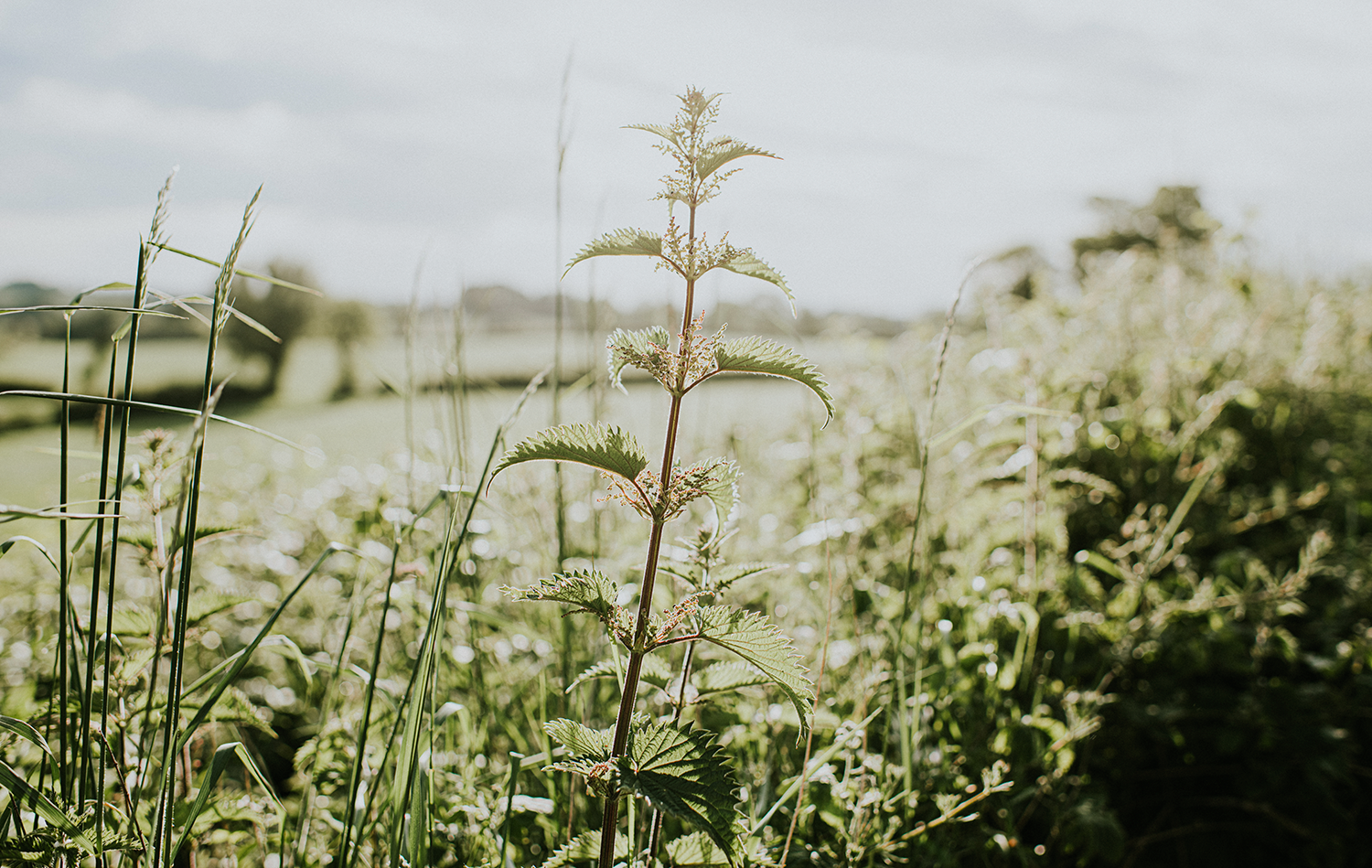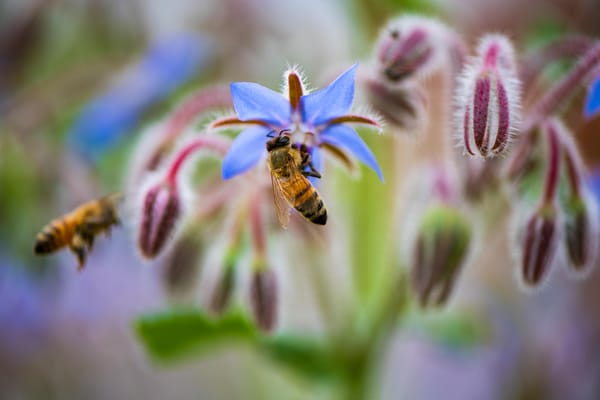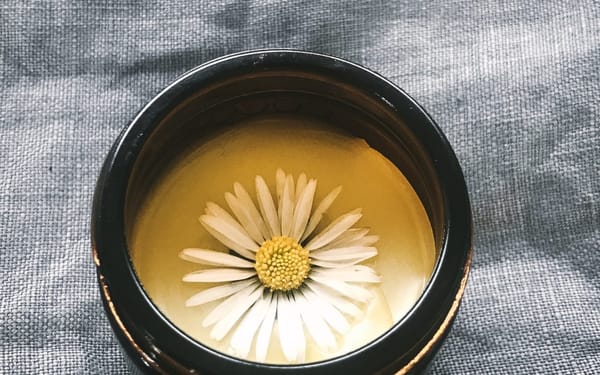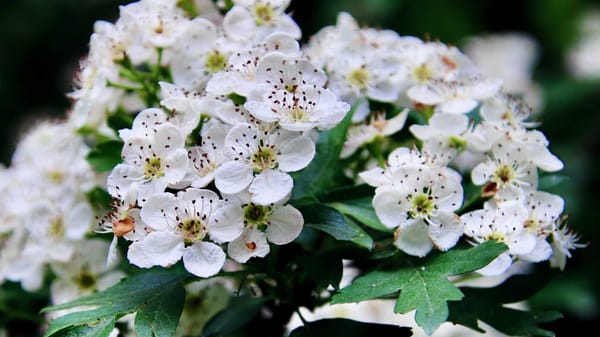I love nettles! Though they are considered a weed, lots of people share my love. There’s a whole week dedicated to them – 14-25 May - a celebration of these tasty, nutritious and wildlife supporting wonder weeds says Melissa Corkhill
Stinging nettles are a super useful plant - they offer many health benefits, can be woven into a fine cloth and attract wildlife to the garden in droves. Found all over temperate regions, read on to find out more about this plant's special powers.
The nettle patch in my garden is lovely and green in the warm spring sunshine. I use it in the kitchen (for soups, tea and pesto) and in the garden as a compost enricher. I have also made string from the dried stalks using a technique called cordage.
Nettles: the sting in the tail
The sting is caused by an irritant in the tiny hairs sound on the leaves and stem; histamine. The Latin name Urtica dioica comes from the root “uro”, which means “I burn”. Each hair is hollow with the venom stored at the base. When this hair is disturbed it breaks off exposing a sharp point, which penetrates the skin and delivers the sting.
Nature invented a complex weapon against predators and then offered up soothing dock leaves, which can usually be found nearby! The leaves of dock when rubbed on the affected area, release a chemical that neutralises the sting and soothes the skin.
How to use nettles in the kitchen
Nettles are an excellent source of calcium, iron, magnesium and a range of vitamins. Collect young nettle shoots (protect hands with thick gardening gloves) and steep in a pot of boiling water to make nettle tonic. This helps to clear out any toxins accumulated during the winter months. When dried or steamed the nettle loses its sting so no need to worry about having a painful experience!
The health benefits of nettles
Nettle tea has been used in treatment of rheumatism and urinary disorders and is also a rich source of iron and calcium for pregnant women. It can be used to good effect after birth too as it acts as an all-round tonic for the new mother and helps boost milk production too. A recent study at the University of Plymouth revealed that stings from nettles significantly reduced pain in 85% of arthritis sufferers studied.
Why nettles are good for wildlife
The nettle is one of the most important plants for wildlife in the UK supporting over 40 species of insect including a variety of butterflies. The small tortoiseshell and peacock butterfly are among the many inhabitants of the plant. In late summer, the proliferation of seeds on the plant provides food for seed eating birds.
Nettles make a sustainable fibre
Cloth has been woven from nettle stems for many centuries. A vibrant green dye can also be made using the leaves and stems whilst the roots make a natural yellow dye.
How to grow your own nettles
To get a nettle patch started in your garden look for a sunny sheltered spot and ensure that the soil is well nourished (perhaps adding some organic manure or well-rotted compost if you have some). Find a friend who can donate some nettles for your plot. These plants are wild so shouldn’t be taken from the countryside. Plant the nettles about 30cm apart and keep them well watered. Warn your children of the stinging powers and help them observe the proliferation of insect life enjoying the nettles. Watch your garden thrive and your health increase!
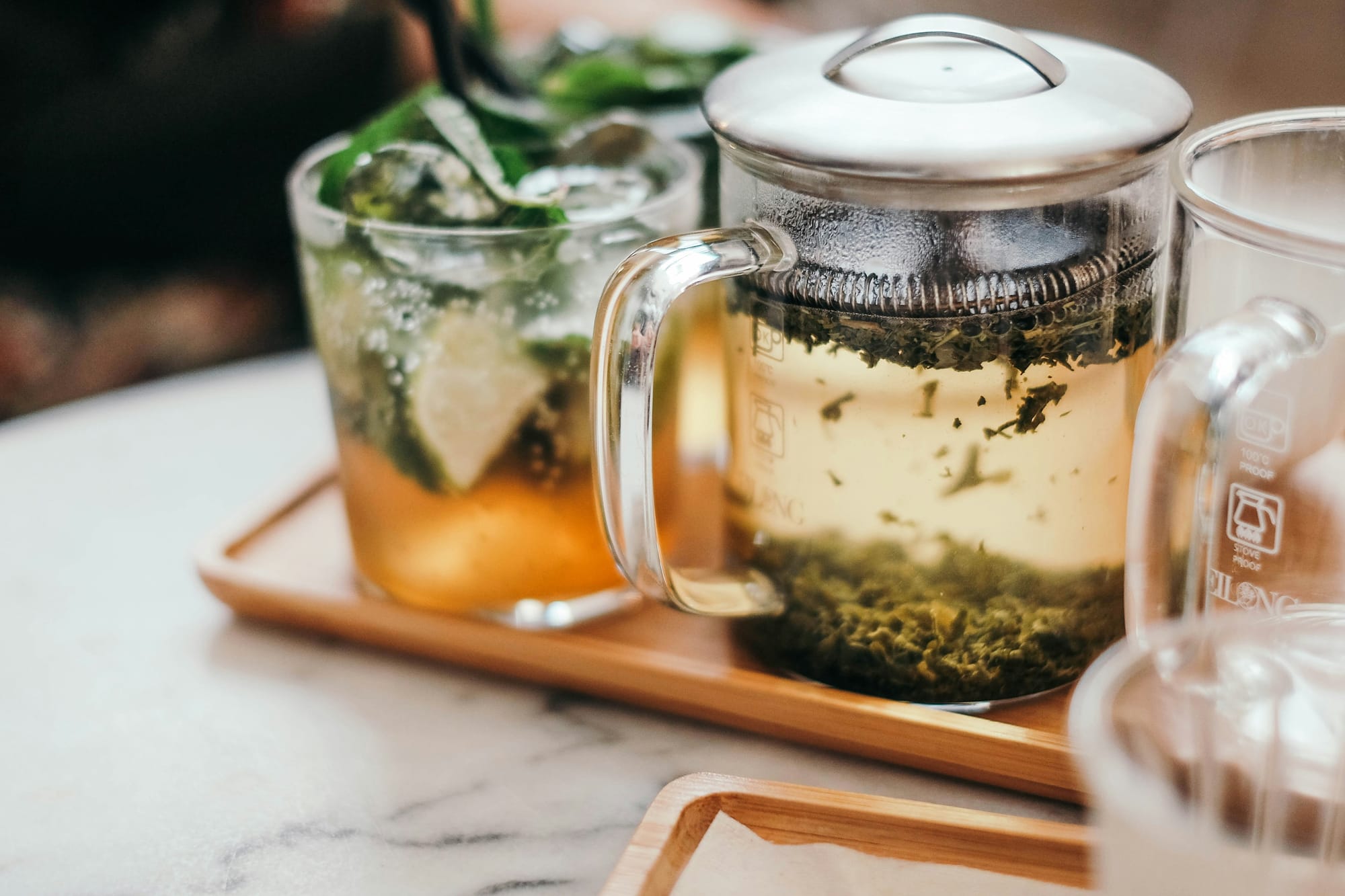
Boost Your Health with Nettles
Though most of us know them as ‘stinging nettles’ and have been on the wrong side of them, nettles are in fact some of the world’s truly wondrous weeds. Because they grow wild and abundant in hedgerow and garden, we can easily incorporate this power plant into our everyday lives says Lucy Corkhill
Nettles have a powerful effect on your immune system
Nettles are also well known for their use with diseases of the urinary system, including prostate problems, infections, inflammations, bed-wetting and incontinence. They are often used when people are detoxing, because of their cleansing effect and support of the liver and spleen. For those troubled by allergies, the anti-inflammatory compounds and flavonoids in nettles reduce the amount of histamine produced in an allergic response.
They can also be taken as an immune support as they are jam-packed with vitamins A, C, and D, plus high amounts of iron, potassium, manganese and calcium. There is evidence that the ancient Greeks used nettles for respiratory disorders from coughs through to tuberculosis. Documents also reveal just how long we humans have relied on nettles as a hair tonic – nettles are renowned for promoting healthy, thick, shiny hair. They have been used for hair problems from dandruff through to balding and alopecia.
Nettles to support women's health
Throughout history, women have used nettles as the perfect female tonic. Native American women use this wonder weed throughout pregnancy and as a remedy to stop haemorrhaging during childbirth. Because of their affinity with the blood, and as an energy tonic, nettles are great for young girls just starting out on their menstruating journey through to menopausal women.
Pregnant women can use nettles as an excellent source of vitamin K. Lactating women drink nettle tea because of its milk-boosting properties. Nettles have been used as an aid to fertility and, because of their high mineral content and life-giving properties, are good for both male and female sexual vitality.
How to use nettles as medicine at home
First, find a healthy bunch of nettles in an unpolluted area (avoid roadside nettles etc.). Use rubber gloves to pick the young leaves at the top of the plant – spring is the best time to harvest them, before they have flowered.
Nettle Tea You can use the leaves to make nettle tea – a few leaves washed and steeped in boiling water provide an excellent early spring tonic to revitalise and refresh and to combat problems mentioned above.
Nettle Infusion A nettle infusion – nettles steeped in boiled water for 10mins and left to cool – can be used as a hair growth tonic. Keep in the fridge for use on irritated skin too.
Nettle Tincture Make a nettle tincture by leaving a handful of fresh leaves or two spoons of dried leaves to macerate in half a litre of alcohol for ten days. Use for problems described above and as a blood tonic.
Nettle Juice Nettle juice can be made using a juicer and is a wonderful immune-boosting and deeply cleansing green drink. Use during a cleanse for health inside and out.
Dried roots/leaves Ground dried roots have been used in clinical trials for prostate problems. Dried leaves can be added to food, including pet food for cats and dogs for digestive health, and chicken feed for healthy poultry.
How to get involved in Be Nice to Nettles Week!
Be Nice to Nettles Week takes place from 14-25 May. Here are 3 ways to embrace the stingers!
1. Create a nettle patch in your garden. Not only will it encourage aphid-eating ladybirds, you’ll also welcome a range of other insects and wildlife to your space. Gardeners will find that not only do these plants support wildlife, they also make a nutritious plant fertiliser which can inject your plot with life and help protect against diseases.
2. Get experimental with nettles in your food. Pizza toppings, pie fillings, soups, stews, pesto…the list is only limited by your imagination! Find our soup and spanokopitta recipes below.
3. Read about why nettles sting and whether dock leaves really are effective at calming stings at The Woodland Trust. https://www.woodlandtrust.org.uk/blog/2019/05/why-do-nettles-sting/
Recipes: How to use nettles in the kitchen
NETTLE SOUP
Thanks to River Cottage for the inspiration for this super tasty, nourishing soup that is easily made with a few store cupboard essentials and a big carrier bag full of nettles from the garden. Use gloves to pick the nettles and rinse in a large colander before use to remove any debris/insects etc. Adding a potato to the soup gives it body and the stock adds flavour. You could make a perfectly delicious soup with just these three ingredients but if you have a carrot and onion to hand so much the better.
Ingredients
Half a carrier bagful of stinging nettle tops, or fresh-looking larger leaves
50g butter
1 large onion (or a dozen crow garlic bulbs if you want to be truly wild), peeled and finely chopped
1 litre vegetable stock
1 large potato, peeled and cut into cubes
1 large carrot, peeled and chopped
Sea salt and freshly ground black pepper
2 tbsp crème fraîche
A few drops of extra-virgin olive oil
A few drops of Tabasco
Method
Wearing rubber gloves, sort through the nettles, discarding anything you don’t like the look of and any thick stalks. Wash the nettles and drain in a colander.
Melt the butter in a large saucepan, add the onion and cook gently for 5-7 minutes until softened.
Add the stock, nettles, potato and carrot. Bring to a simmer and cook gently until the potato is soft, about 15 minutes.
Remove from the heat. Using an electric hand-held stick blender, purée the soup and then season with salt and pepper to taste.
Ladle into warmed bowls and float a teaspoonful of creme fraîche on top. As this melts, swirl in a few drops of extra-virgin olive oil and Tabasco.
ROBB'S NETTLE SPANAKAPITA
This is basically the traditional Greek spinach pie substituting nettles for spinach for a power-packed, delicious and energising dinner. If using shop-bought pastry, remember it needs to stand at room temperature for a few hours prior to cooking.
INGREDIENTS
Pack of filo/puff pastry (or you can make your own pastry)
200g feta cheese
1 carrier bag of fresh young nettle leaves, chopped fairly small (wear gloves!!)
2 eggs
2 cloves garlic
Handful of fresh herbs – parsley or dill work well
1 large onion, chopped
3-4 spring onions, chopped
Butter, for cooking and greasing
METHOD
1). Preheat oven to 180°C/Gas mark 4. Wash and drain the chopped nettles.
2). Heat the butter in a pan and lightly cook the onions, garlic and green onions until soft.
3). Add the nettles and cook for 5 to 10 minutes until wilted. Add the herbs and season with salt and pepper.
4). Remove from heat and leave to cool.
5). In a separate bowl, mix together the feta and eggs. When the nettle mixture is cooled, stir in.
6). Roll out half the pastry. In a greased pie dish, arrange the pastry so that it just overlaps the sides. If using filo pastry, remember to brush each sheet with melted butter/olive oil as you lay it in the dish.
7). Place the nettle and feta mixture on top of the pastry and even out. Roll out the remaining pastry and use to cover your pie, sealing the edges with melted butter/ olive oil.
8). Cook for 30-35 minutes until top is golden brown.
MORE INSPIRATION
WATCH Dane of Home is Where the Heart Is getting under the skin of the tough guy exterior of the stinging nettle!


